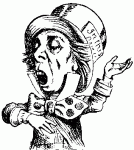Only two artists have released No. 1 albums in each of the last three years. The first is Taylor Swift, who has as many Album of the Year Grammys as any soloist in history. (Her peers in that category are Frank Sinatra, Stevie Wonder, and Paul Simon.) The other is a twenty-two-year-old performer who goes by NBA YoungBoy. (The “NBA” stands for “Never Broke Again.”) His hit records include “AI Youngboy 2,” “Top,” and “Sincerely, Kentrell.” But, despite his achievement, shared with one of the most widely recognized pop artists of all time, YoungBoy remains broadly unknown.
YoungBoy is a disciple of Baton Rouge hip-hop stars such as Boosie Badazz and the late Lil Phat, and his sound isn’t a dramatic departure from the rap music of the moment. His music is trap-adjacent, bounce-heavy, and Auto-Tuned, and his nasally singsong voice intensifies into a snarl. With his professed fervor for retaliation, YoungBoy has earned a rep as a single-minded aggressor, but his more confrontational songs are blunted by a soft side. He also has a seemingly inexhaustible work ethic—he has released nineteen full-length solo projects in just under seven years. Since 2017, he has secured four Recording Industry Association of America-certified platinum albums and mixtapes, along with nine platinum singles, six of which went multiplatinum. By most numerical benchmarks, YoungBoy is among the most successful artists working today. Why doesn’t it feel like it?
YoungBoy is one of the most extreme cases of a recent developing phenomenon: invisible music stardom. It is easier than ever to be a hit by all of the industry’s standard performance metrics and still go unnoticed by the general public—to have an enormous following that barely registers within the wider pop-culture ecosystem. This occurrence is, first and foremost, the by-product of a streaming infrastructure that uses a plays-per-song model to approximate record sales—a system that allows artists to bypass the old display stand, even if they risk anonymity. But it also illustrates a gap between what is promoted and what is popular.
The music industry has always had its unlikely cult favorites, but only in the streaming age can an artist enjoy similar success to pop stars and have little to no cultural footprint beyond the community that is tuning in. (There are artists putting up smaller numbers than YoungBoy who are considered more in vogue: critical favorites such as Vince Staples, Freddie Gibbs, and Phoebe Bridgers, or off-center pop stars like Lana Del Rey.) At least some of this is because of streaming’s intangibility. When the industry was built on physical sales, an artist big enough to get a million CDs shipped out to stores was guaranteed a natural level of ubiquity, and an entire marketing apparatus existed to make such artists and their projects visible. Although we can imagine CDs stacked high, collected streams feel a bit like matrix code.
In 2014, as physical album sales dipped below streaming for the first time, the Billboard 200 premièred a new formula for measuring music consumption. The metrics, which have been updated through time, attempt to approximate digital units as album sales: track equivalent albums (tea), for example, counts ten song downloads from the same album as a single album sale, whereas streaming equivalent albums (sea) counts 1,250 premium streams, or 3,750 free streams, from the same album as a single album sale. In 2019, video streams were added into the equation. The tracking of physical sales hasn’t changed, but, these days, such sales make up only ten per cent of all music revenue.
For a little while, it seemed as if music streaming could democratize the listening experience, and become a direct pipeline to the mainstream for unlikely stars and artists from foreign markets. As streaming rose, so did Black music’s metric standing: nearly a third of all 2020 audio streams, for example, were hip-hop and R. & B. (And nearly thirty-four per cent of video streams came from the same genres.) K-pop acts such as BTS and BLACKPINK have benefitted from streaming platforms’ playlist framework, and the music-sharing site SoundCloud gave bedroom artists such as Billie Eilish and Post Malone a megaphone to reach a national audience overnight. But there remains a colossal gap between megastars and D.I.Y. music creators. Data collected in 2020 revealed that ninety per cent of streams go to the top one per cent of artists. Artists like YoungBoy find themselves somewhere in the middle: they have carved out a share of the streaming pie, but it hasn’t resulted in any discernible cultural saturation.
In 2020, YoungBoy made nearly as much as Taylor Swift did in streaming revenue, according to Billboard. (The difference is that streaming revenue accounted for nearly all of his revenue for the year, and less than half of hers.) Similarly, the bluesman Florida rapper Rod Wave, whose last two albums débuted at No. 1 and No. 2 on the charts, made his big splash in 2020 without selling a single physical album, thanks to video streams (which accounted for twenty per cent of his streaming plays). In a year with limited touring, both YoungBoy and Rod Wave made gains as some of music’s top earners. Their success is largely owed to one of the industry’s most under-recognized platforms: YouTube.
Though Spotify remains the dominant music platform in terms of subscriber numbers, YouTube has a far bigger reach, and, in September, 2021, YouTube Music, the company’s music-only streaming service, passed fifty million subscribers, up twenty million from the previous year. (This marked a significant gain on competitors like Apple Music and Amazon Music, which have more than seventy-eight and sixty-eight million subscribers, respectively, according to recent estimates. However, Spotify is still way out front, with a hundred and seventy-two million paid subscribers.) YouTube, which has lenient upload limits and allows musicians to collect revenue on both video and audio streams, has become something of a haven for niche artists with huge, devoted fan bases, especially rappers and Latin-music performers in genres such as reggaetón. Late rappers such as Juice WRLD and Young Dolph, embattled provocateurs such as Kevin Gates and Kodak Black, and regional phenoms such as Lil Durk and Moneybagg Yo are headliners on YouTube Music and its chart, mixed in among superstars such as Ed Sheeran and the Weeknd.
YoungBoy, who has dominated YouTube’s music space for the last several years, is the kind of artist that the algorithm loves—consistent and prolific, generating feed for endless playlists. He routinely appears atop the platform’s “Top Artists” chart, which tabulates views across official music videos, live performances, remixes, user-made videos, album songs, and collaborations. Most of YoungBoy’s own videos are low-budget; many feature the artist by himself, rapping directly into the camera. One of YoungBoy’s video directors, LOUIEKNOWS, has said that the rapper has no release strategy other than to simply churn out content, just as any other YouTube vlogger or influencer does.
There’s an unsavory edge to the rapper’s stardom, too. YoungBoy has a long rap sheet, which includes aggravated assault with a firearm, in 2017, and an attack on his girlfriend that was caught on camera, in 2018. He was in jail when his 2021 album, “Sincerely, Kentrell,” dethroned Drake from the Billboard 200. But none of this has stopped the rapper from reaching his listeners. One clear by-product of direct-to-consumer streaming, especially on platforms such as YouTube and SoundCloud, is that artists can circumvent controversy and cultural gatekeepers who might attempt to police them out of the public sphere. YouTube, in particular, has several attributes that make it attractive for contentious cult favorites such as YoungBoy: a low barrier to entry, a built-in social mechanism, and a community feature that promotes content directly to fans. YoungBoy, then, provides a blueprint for other backlash-prone artists: ignore the mainstream apparatus entirely, and upload straight to your supporters.
The fans, in turn, have earned their own notoriety. In keeping with the rapper’s own reputation, YoungBoy’s supporters have become known for being defensive and territorial. That their artist of choice is so underappreciated is part of the appeal: they wear their aggrievement like a badge of honor. The memes portray these fans as belligerent, bringing unnecessary hostility to everyday tasks—they are aggressive not only in their fandom but in everything they do. An exchange on Twitter from April, 2020, sums up the dynamic perfectly. One user reposted a video mocking the passion of YoungBoy fans, suggesting that they jog, eat, and park their cars with gratuitous antagonism. Another responded, “Who the hell is youngboy.”































